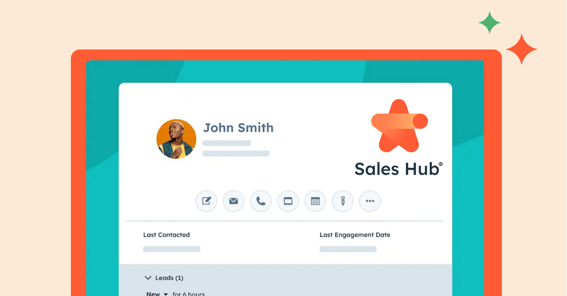Overlooked to Opportunity: HeyReach Automates Tier 3 Leads with Twain
HeyReach unlocked $100K in hidden revenue by using AI to personalize outreach to tier 3 leads. Learn their proven framework for scaling with Twain.

HeyReach unlocked $100K in hidden revenue by using AI to personalize outreach to tier 3 leads. Learn their proven framework for scaling with Twain.

When you're running a SaaS company, one of the most critical decisions you face is resource allocation. Where do you invest your sales team's time? Which leads deserve personal attention? These questions become even more pressing when you're dealing with hundreds or thousands of free trial signups.
Macklin Buckler, founder of Berlin-based go-to-market infrastructure company Harochi, and Ilija Stojkovski from HeyReach recently demonstrated how they solved this exact challenge—and how their solution helped HeyReach grow from $1 million to $6 million in revenue in less than a year.
HeyReach developed a sophisticated lead-tiering system that categorizes every free trial signup into three distinct buckets:
These are the high-value prospects that keep the head of sales up at night. When a tier 1 company signs up, they receive immediate, personalized attention from senior sales leadership through coordinated email and LinkedIn outreach.
Mid-level prospects receive attention from sales reps with messaging that feels tailored to their specific needs, though not quite as intensive as tier 1 treatment.
Here's where things get interesting. Traditionally, these smaller companies would receive a generic "Thanks for signing up" email and little else. As Maclin candidly explained, these leads typically ended up "in a dumpster somewhere"—not because they lacked potential, but because manual outreach didn't make economic sense.
The numbers told a compelling story. HeyReach discovered they had nearly 800 tier 3 companies in their pipeline—almost as many as their tier 1 and tier 2 leads combined. With conservative projections showing a potential 20-25% conversion rate improvement, they were looking at nearly $100,000 in additional annual revenue just sitting there, untapped.
The challenge? Hiring salespeople to handle these leads didn't make financial sense. The cost of salaries, benefits, and training would eat up any potential gains. They needed a different solution.
This is where Twain's AI copywriting capabilities transformed the game. Instead of hiring expensive copywriters (which Maclin tried and admits "did not pay off"), they automated personalized outreach that actually converts.
Using Clay's native integration with Twain (announced just recently), HeyReach created a system that:
Every message follows a proven framework:
For example, when reaching out to a fundraising platform, the system might mention how HeyReach can help their canvassers reach more donors through automated LinkedIn prospecting—showing clear understanding of their specific challenges.
The brilliance of this system extends beyond just the numbers. As Ilya pointed out, there's a meta-level benefit: HeyReach is using LinkedIn automation to sell LinkedIn automation. They're demonstrating their product's capabilities through their own outreach.
When prospects ask, "Was this automated?" the answer is a confident yes—followed by, "Want to do the same for your business?"
Those "small" accounts you're neglecting could represent significant revenue when approached correctly.
With the right tools and approach, automated outreach can feel more personalized than rushed manual efforts.
Using your own product to sell your product creates authentic proof of concept that resonates with prospects.
Before investing in headcount, calculate whether AI-powered automation could deliver better ROI.
The difference between spam and effective outreach is research and relevance—both of which AI can now deliver at scale.
By treating their tier 3 leads with the same strategic thinking they applied to enterprise accounts—just with different execution—HeyReach unlocked hidden revenue that was always there. They just needed the right technology stack to access it profitably.
The lesson is clear: in today's AI-powered sales landscape, no lead should be left behind. The question isn't whether to engage your tier 3 leads, but how to do it in a way that makes economic sense. For HeyReach, that answer was Twain, Clay, and a willingness to rethink traditional sales approaches.
AI Disclaimer: AI helped us summarize the key points from these videos, and our editorial team reviewed everything to make sure it's clear and correct.

With Sales Hub's extensive range of tools, startups' sales teams can spend more time closing deals and less time on admin.

Industry leaders reveal why data infrastructure, not AI models, will determine winners. Learn how to build competitive data ecosystems for AI success.

Discover different AI use cases, from chatbots to predictive analytics, designed to boost startup growth or efficiency in enterprise companies.
